Discover the world of dog training toys and how they can revolutionize your pet’s playtime and learning experience.
Revolutionize Your Dog’s Playtime with Innovative Training Toys
Incorporating innovative training toys into your dog’s playtime can transform their daily routine into a fun and educational experience. These toys are designed not just to entertain, but to also help in shaping your pet’s behavior and intelligence.
Interactive dog training toys come in a variety of shapes and sizes, each tailored to cater to different breeds and play styles. From puzzle-based toys that challenge your dog’s problem-solving skills to treat-dispensing toys that encourage patience and focus, there’s a toy out there for every pup.
The benefits of using training toys are twofold. They provide mental stimulation, which can prevent boredom and destructive behavior, and they also offer a physical workout. This dual-purpose approach ensures that your dog stays both happy and healthy.
Many training toys are designed with specific training goals in mind. For instance, toys that encourage fetching can improve your dog’s coordination, while those that require your dog to manipulate a lever to get a treat can enhance their dexterity and problem-solving abilities.
Not all dogs are the same, and neither are their preferences. Some may love the challenge of a tough rubber toy, while others might be more intrigued by the sound of a squeaky toy. Choosing the right training toy for your dog can make a significant difference in their engagement and enjoyment.
Innovative training toys also serve as a great bonding tool between you and your pet. Engaging in play sessions with these toys can strengthen your relationship and create lasting memories. Plus, it’s a fantastic way to reinforce positive behavior and commands.
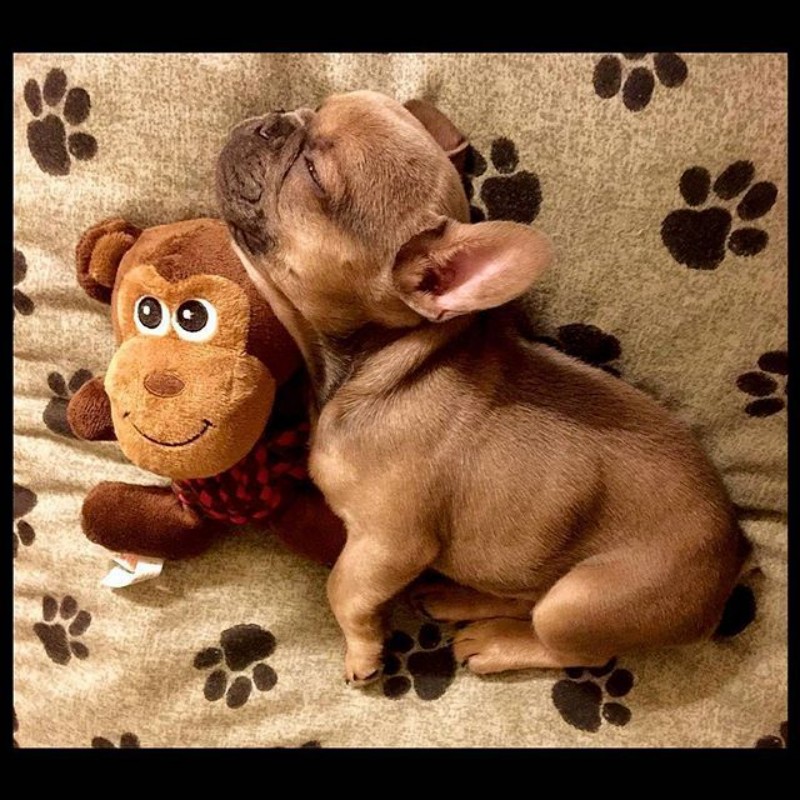
Understanding the Importance of Interactive Dog Toys for Training
Interactive dog toys are more than just playthings; they’re essential tools for effective training. They provide a tangible way to reinforce commands and behaviors, making the learning process more engaging for your furry friend.
These toys often come with a variety of features that cater to different aspects of training. For example, treat-dispensing toys can encourage your dog to follow a sequence of commands before they receive a reward, reinforcing the importance of patience and obedience.
By using interactive toys, you can create a structured play environment that mimics real-life scenarios. This helps your dog learn how to behave in different situations, from staying calm during a visit to a vet to managing their excitement during a family gathering.
Interactive play also helps in building your dog’s confidence. When they successfully interact with a toy, it boosts their self-esteem and can lead to better overall mental health. It’s a win-win situation for both you and your pet.
Moreover, these toys can be a lifesaver during moments when you’re unable to actively engage with your dog, such as when you’re cooking or on a long car ride. They provide a sense of security and entertainment for your pet, reducing the likelihood of destructive behavior.
The physical and mental stimulation offered by interactive toys is invaluable. It helps in preventing obesity and keeping your dog’s mind sharp, which can extend their quality of life. Plus, it gives you a chance to observe and understand your dog better, leading to more effective training techniques.

Top Features to Look for in a High-Quality Dog Training Toy
When selecting a high-quality dog training toy, it’s important to consider features that not only make it fun for your pet but also effective for training. One key feature is durability. Look for toys made from robust materials that can withstand the rigors of play, like sturdy rubber or reinforced fabrics.
Another important aspect is the ability to customize the toy to your dog’s specific needs. Toys that can be filled with treats or have adjustable difficulty levels are great for progressing your dog’s training. This ensures the toy remains challenging as your dog learns and grows.
Interactive elements are also crucial. Toys that require your dog to use their brain, like puzzle toys or those that hide treats, can help stimulate mental activity and improve problem-solving skills. This type of engagement is particularly beneficial for dogs that tend to get bored or anxious.
Safety should always be a top priority. Choose toys that are free from harmful chemicals, small parts that could pose a choking hazard, and any sharp edges. A high-quality toy should be designed with your dog’s safety in mind.
Lastly, consider the size and shape of the toy. It should be appropriate for your dog’s breed and size, ensuring it’s not too large or too small. The right size and shape can make a toy more appealing and effective during training sessions.

How Dog Training Toys Can Boost Your Pet’s Intelligence and Behavior
Dog training toys are a fantastic way to keep your pet’s mind sharp. They stimulate cognitive function by challenging your dog to figure out how to get to the treats or toys inside, which can help sharpen their memory and problem-solving skills.
Engaging with these toys often requires your dog to use their senses, such as smell and hearing. This sensory stimulation can enhance their ability to detect scents and respond to different sounds, making them more alert and responsive to their environment.
Consistent use of training toys can also improve your dog’s behavior. The act of interacting with a toy can help redirect aggressive or destructive behaviors, as it provides a healthy outlet for their energy and curiosity.
By incorporating training toys into your routine, you’re essentially teaching your dog to be patient and persistent. This patience can translate into better behavior during training sessions, as your dog learns to wait for cues and commands.
Moreover, the bond you build with your dog through these toys can lead to improved communication. As your dog becomes more attuned to the toys and the tasks they require, you’ll notice a deeper understanding and cooperation, which can positively influence their overall behavior.

Real-Life Success Stories: Transforming Your Dog with Training Toys
One dog owner shared how a puzzle toy transformed their hyperactive beagle. With daily challenges, the toy helped the beagle channel its energy into problem-solving, resulting in a calmer, more focused pet.
Another story involves a labrador that used to bark excessively. A treat-dispensing toy kept the labrador engaged, reducing excessive barking and improving their focus on commands.
A client with a shy golden retriever found that a plush toy with sound effects helped their dog overcome its fear of strangers. The toy’s comforting sounds and tactile texture made it easier for the golden retriever to socialize.
A case with a terrier mix showed how a durable tug-of-war toy helped the dog learn boundaries. By engaging in controlled play, the terrier mix learned to enjoy playtime without becoming aggressive.
A user story spoke of a Chihuahua that would constantly chew on furniture. With a sturdy, interactive toy, the Chihuahua redirected its destructive behavior, saving the furniture and giving the pup a great workout.

The Role of Scent and Sound in Effective Dog Training Toys
Scent is a powerful tool in dog training toys, as it taps into a dog’s highly developed sense of smell. Toys that have a strong, appealing scent can keep your dog’s attention and motivate them to engage with the toy more actively.
Sound also plays a crucial role in these toys. Many come with built-in sounds, like squeaks or beeps, that can capture a dog’s interest and make the toy more interactive. The sound can be a great way to get your dog’s attention, especially if they are distracted or disinterested.
The combination of scent and sound in training toys can create a multi-sensory experience that enhances learning. Dogs are more likely to remember commands or tasks when they are associated with both a scent and a sound, making the training process more effective.
Certain toys are designed to release scent over time, which can be particularly useful for dogs with strong noses. This gradual scent release can keep your dog interested in the toy for longer periods, encouraging extended play and training sessions.
In addition to capturing a dog’s attention, the use of scent and sound in training toys can also help calm anxious or stressed dogs. The familiar scents and soothing sounds can provide comfort and reduce stress, making these toys versatile tools for various training needs.
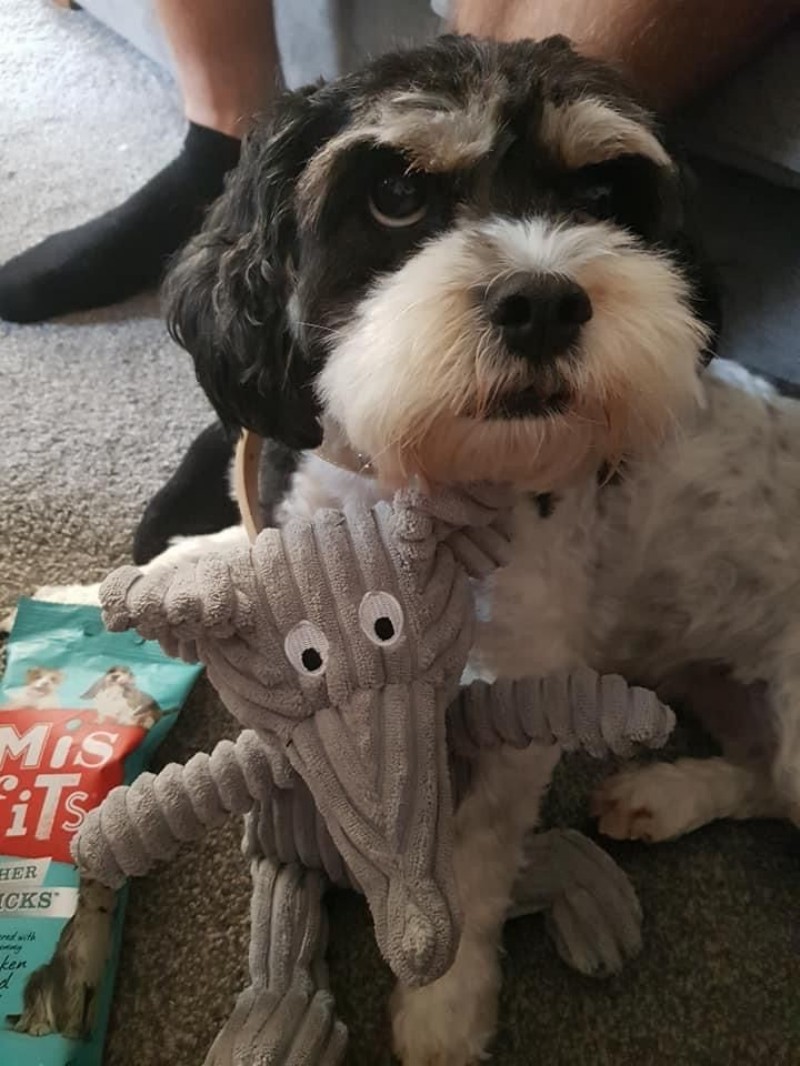
Navigating the Market: Tips for Choosing the Right Dog Training Toy for Your Pooch
When shopping for a dog training toy, consider your dog’s size. A toy that’s too small can be a choking hazard, while one that’s too large might not be engaging enough.
Think about your dog’s breed and energy level. High-energy breeds might need toys that can withstand rigorous play, while more laid-back dogs may enjoy quieter, more interactive toys.
Inspect the toy’s material and construction. Look for durable materials that won’t easily break or come apart, especially if your dog likes to chew.
Consider your dog’s specific behaviors. If they have a tendency to bark excessively, a toy that can be used for distraction might be helpful. For dogs that are prone to separation anxiety, a toy that can be filled with their favorite scent can offer comfort.
Pay attention to the toy’s functionality. Some toys are designed to help with specific training goals, like teaching fetch or improving coordination. Choose one that aligns with the training you’re doing.
Finally, don’t forget to check for any safety certifications or warnings. A toy that’s been tested and deemed safe for dogs is always a good choice.
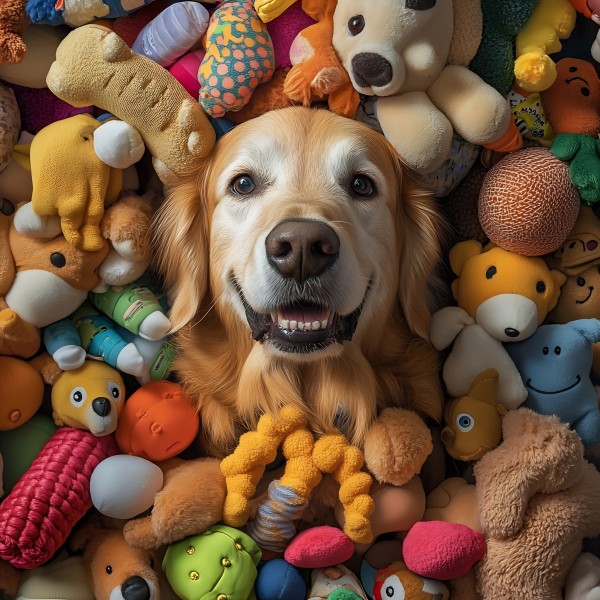
Integrating Dog Training Toys into Your Daily Routine
Incorporating training toys into your daily routine is as simple as making playtime a consistent part of your day. Start by setting aside a specific time for play, which can help your dog anticipate and look forward to these sessions.
Use training toys during regular exercise times to add an element of mental stimulation. This could be during a walk or a backyard session, making the activity more engaging for your dog.
Include training toys in your dog’s bedtime routine. A calming, interactive toy can serve as a comfort object, helping your dog relax before sleep.
Don’t forget to use training toys during downtime. If you’re cooking or reading, a toy can keep your dog occupied and out of trouble.
Vary the types of training toys you use to keep things interesting. Changing up the routine can prevent your dog from getting bored and maintain their interest in training.
Remember to always supervise playtime, especially with new toys or those that have small parts. This ensures both your dog’s safety and the longevity of the toy.
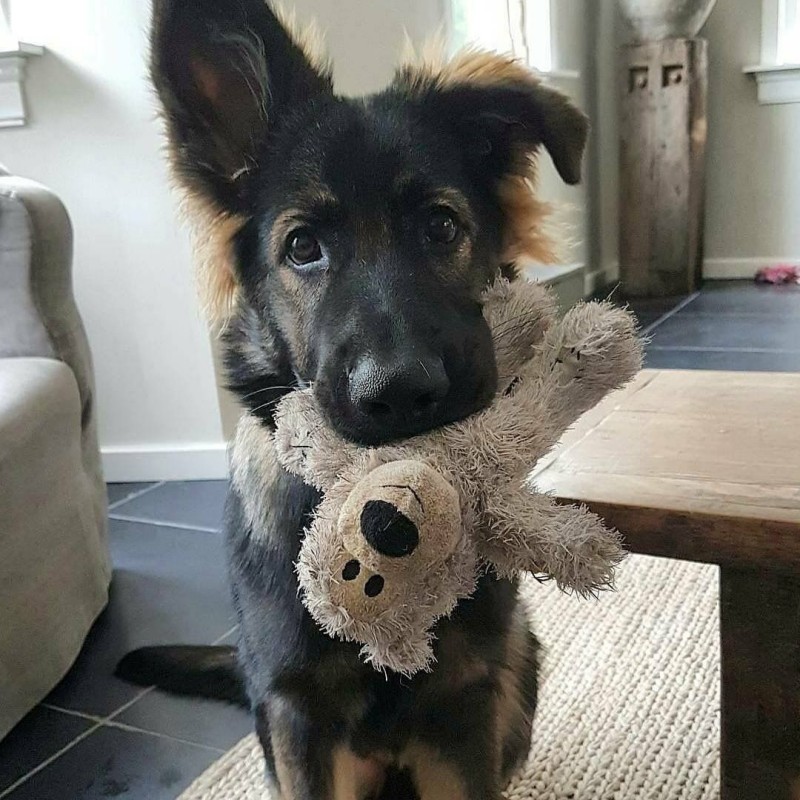
Customer Favorites: Our Best-Selling Dog Training Toys
Our customers can’t get enough of our “Squeaky Fetch Ball,” a classic that’s always a hit. It’s durable and has a sound that’s irresistible to dogs.
The “SmartPuzzle Treat Dispenser” is another top seller. It challenges dogs with different levels of difficulty, making it great for a variety of ages and breeds.
The “Tug of War Rope” is a firm favorite, especially for strong chewers. It’s long-lasting and perfect for reinforcing good behavior through play.
Our “Snuffle Mat” has become a staple for many pet parents. It’s great for hide-and-seek games and provides hours of entertainment as dogs dig for treats.
The “Interactive Laser Pointer” is a favorite for active dogs and owners who want a fun way to engage their pup’s natural hunting instincts.
Don’t miss out on the “Durable Plush Toy,” which is perfect for gentle chewers and offers a soft surface for pets to nap on or tug at.
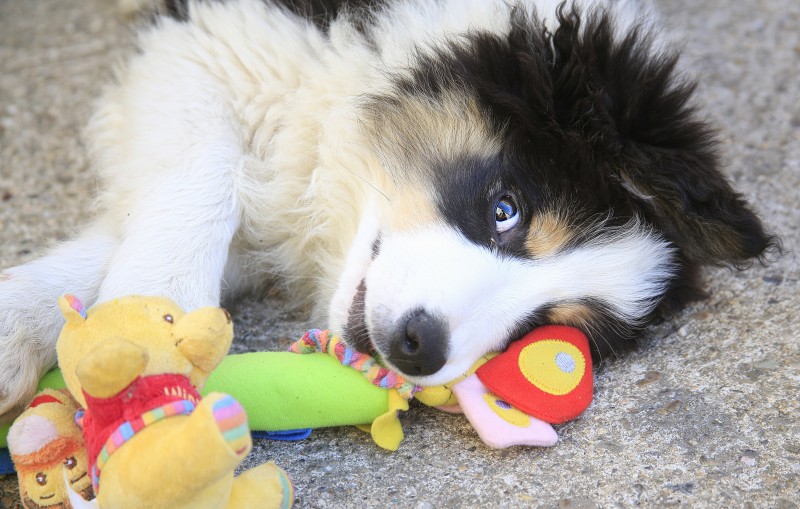
Conclusion: Enhancing Your Dog’s Life with Engaging and Educational Toys
Interactive and educational toys can significantly enrich your dog’s life. They provide not just entertainment, but also a mental workout that can boost your pet’s overall well-being.
These toys help in shaping positive behavior and reinforcing training commands, making them invaluable tools for dog owners. The time spent playing with these toys can be a bonding experience that strengthens the relationship between you and your dog.
From simple puzzles to complex treat dispensers, the variety of toys available ensures that there’s something to suit every dog’s personality and needs. This diversity keeps playtime fresh and exciting, preventing boredom and maintaining your dog’s interest.
In conclusion, investing in engaging and educational dog toys is an investment in your pet’s happiness and development. These toys are more than just playthings; they are partners in your dog’s journey to becoming a well-rounded, mentally and physically healthy companion.
